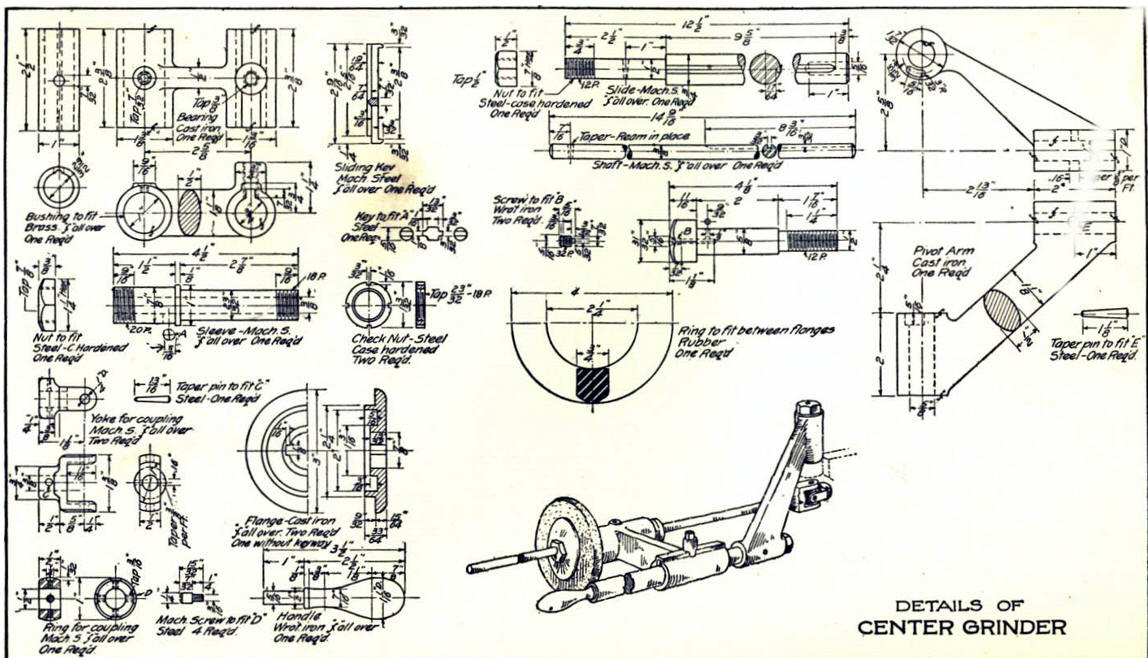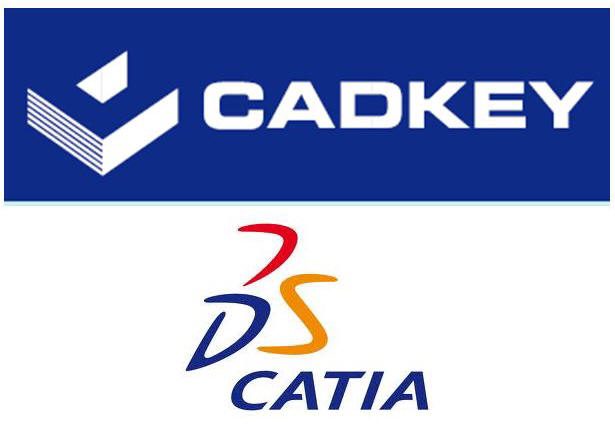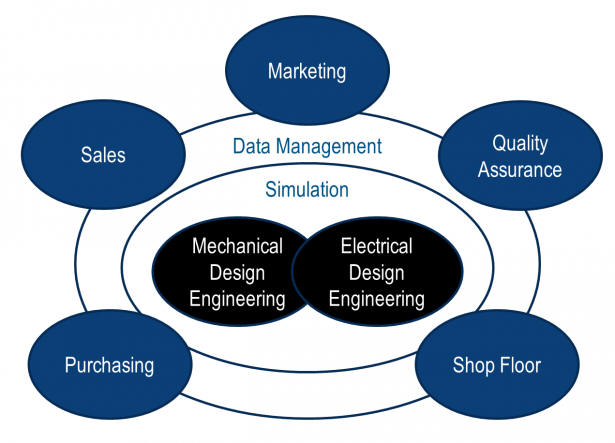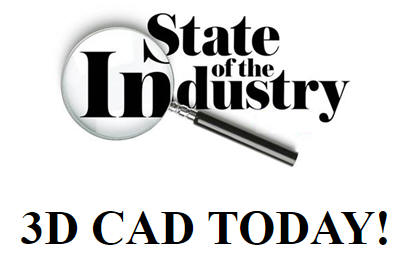|
Solidworks: Engineering 4.0? Everyone is entitled to their own opinions, but they are not entitled to their own facts. 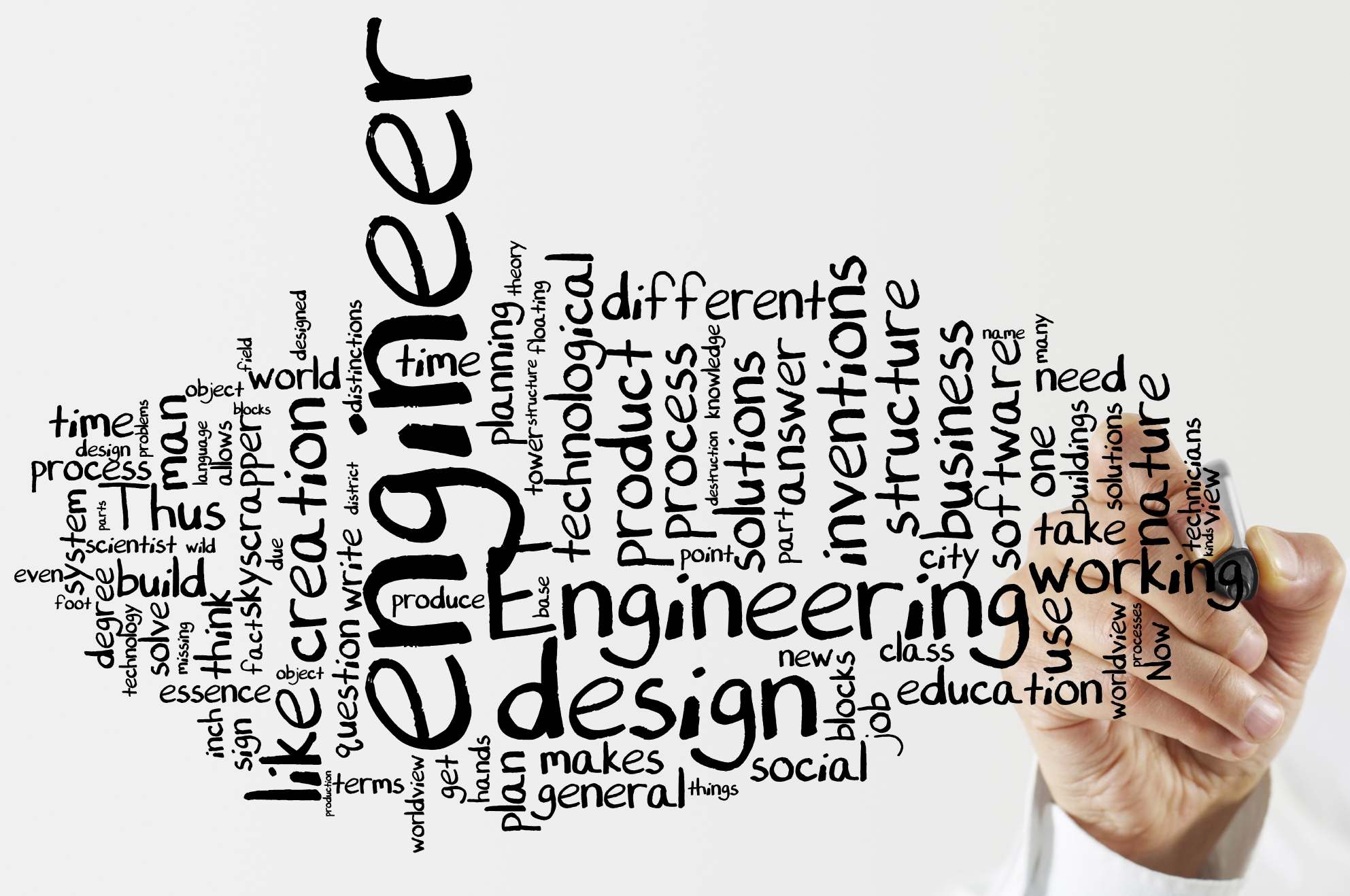 |
|
Solidworks Totally Misunderstands MBD These comments are in reference to this original article. I was introduced to 3D CAD in 1982 after 17 years as a contract design draftsman (jobshopper) creating manual “drawings”. In 1986, I was introduced to PC base 3D CADKEY and quickly became a dealer. I have been instrumental of the introduction of 3D CAD into Boeing, their suppliers and the other industries in the NW, the USA and Canada.
Have you noticed that there is very little true critique of 3D
CAD software? Websites like Engineering.com seem to genuflect at the altar
of the major CAD vendors. By doing this we are not getting a true view of
the industry, at least, in the popular on-line rags. The PLM/MBE pundits,
like Lifecycle Insights, are in the
pocket of these folks and never say a bad thing. They toe the line for the
major CAD packages, basically stifling any improvements in the 3D CAD world. The industry is not running to the level it should be for all of the money and time that has been thrown at it. It is much, much more costly and chaotic than when it was based only on the standard manual drawing. We only added the 3D model and it is only used as a pattern. You pay $6,000 to $20,000 for a seat of 3D CAD and you need a myriad of 3rd party programs to make it work. From realistic rendering, to PDM, to PLM, to MBE, to Analysis, to BOM, to Quoting, to translations etc. Today's CAD world is nothing more that a money machine and the user is the golden goose. Now Autodesk and PTC are locking their customers into their system forever with the subscription only.
You are Not Stuck with Autodesk or PTC Subscriptions! Now, of course, this blog is self serving to Solidworks and there is nothing wrong with disguising interesting topics as marketing tools. I do it all the time. But you have to present it honestly.
So, let’s take a look at what they wrote.
Engineering 1.0 – 1760 to 1970
Engineering and manufacturing have been around as long as the earliest
inventions including the wheel. While papyrus (thin paper) was manufactured
as early as 2550 BC, today’s modern design and engineering can be traced
back to the start of the industrial revolution in the 1760’s. Incredible
inventions were designed and manufactured through the early 1900’s using
pencil and paper, vellum or mylar (and trial and error) such as the steam
engine, cotton gin, telegraph, sewing machine the Model T Ford automobile
and flying machines.
While materials and manufacturing methods became more sophisticated, the
methodology of creating technical drawings did not change substantially
until the computer age.
I am a Boeing trained draftsman and I usually relate to my experience at Boeing, since it had the best and most copied engineering standards in the industry along with the automotive industry. Why didn't the engineering drawing change? It was based on a well proven standard that was used through out the industry. In the past, I could walk on to any job and be productive that day. Think about doing that today! All the computer did was add the 3D model and move the documentation to the end of the process as basically reference information and that is only needed if you are going to use the 3D model as a pattern for CNC or 3D printing. Nothing has really changed. Some people think that it should by trying to reinvent the wheel in a place where that wheel is already well defined. We will get into that later.
All airplanes from the 767 down were designed and documented with manual
drawings. This was until 1980 when they started dabbling in 3D CAD.
My First 17 Years or "How did we do it without 3D CAD!"
Engineering 2.0 – 1970’s-1995 With the advent of computers, first expensive mainframes, then mini-computers and finally personal computers, engineers, designers and inventors were able to place circles, lines and arcs virtually on a computer screen. This revolution improved over 20-30 years and is still available and in use today by many individuals and organizations. Significant increases in speed could be realized, especially when making any changes as the need to erase pencil or ink was replaced by a simple electronic eraser. Computerized drafting tools advanced negating the need for performing mathematical calculations to find midpoints, areas, centers of gravity. In addition, problems that could only be solved using complex true projection calculations (such as in calculating true lengths of non-prismatic shapes) could now be solved using correctly drawn geometry with basic r drawing techniques.
What they seem to be describing here is the “Electronic Drafting Package”. 3D CAD was instantly adopted by all the large companies. I personally was introduced to Computervision CADDS 4 in 1982. In 1986, Boeing had settled on Catia 3. They had already experimented with other programs, like Computervision CADDS 3. So why did they settle on Catia, a French outfit, that was produced by somewhat of a competitor, Dassault? It ran on IBM and Computervision ran on their own, very undependable mainframe. No manager ever got fired for buying IBM. So the die was cast.
I was introduced to PC based 3D CADKEY while on contract with Boeing in 1986
in the 747 flight deck group. I was instrumental in expanding CADKEY's use
in Boeing, when I left, flight deck had 35 CADKEY and ended up with 45 and
eliminated one Catia 3 seat. I quickly became a dealer. CADKEY was the only viable PC based 3D CAD system until the turn of the century. Pro/e was introduced in 1988 and was the first solid modeling system designed from the ground up. They were introduced on a UNIX bases system. Even though the PC was out, the major systems didn't move to them until the turn of the century. Also there is no such thing as an electronic eraser, I think they mean a delete or trim option. These are not paint programs. The 1980's - 3D CAD - The Beginning The 1990's - 3D CAD/CAM Moves to the PC!!
Engineering 3.0 – 1995-2015 While some 3D capabilities existed for very well-funded companies in the aerospace and automotive industries, the mass market was not exposed to 3D CAD until the early 90’s. SOLIDWORKS mission to enable 3D on every Engineer’s desktop was started in 1995 and has since reached out to include over 2 million users in education and commercial endeavors.
PC based 3D CADKEY was widely used throughout the late 1980's and 1990's. Boeing had 1500 seats and I had sold virtually every Boeing supplier many seats of CADKEY. I was instrumental in bringing a high level of compatibility between Catia and CADKEY due to my earlier experience. I finally became Boeing CADKEY dealer.
CADKEY or Catia? Boeing’s Billion-Dollar 3D CAD Mistake!
The above statement is a bit self-serving it doesn’t tell you that
Solidworks was nothing but a poor copy of Pro/e on the PC. They were lucky
that PTC was so slow moving to the PC, 2001. But they were the first and
history based design was new and clever
as compared to the rough Boolean design systems as compared to the
feature recognition of the direct edit products today.
CADKEY had a dongle from the very beginning. IronCAD and virtually every
product put on copy protection, Inventor, Solid Edge, SpaceClaim, ZW3D and
all of the high-end systems. So Solidworks is hardly the best Pro/e Clone
and I guarantee the Pro/e clone systems are hardly the best 3D CAD systems. The Worst to Best 3D MCAD Systems Expanded! IronCAD vs Solidworks and the Pro/e Paradigm 3D Modeling Techniques Defined The 2000's - The Age of 3D CAD Un-Enlightenment!
Engineering 4.0 – 2015 – ?
So, what is the next revolution in Engineering?
It is no longer acceptable to expect each department or employee to search
for engineering data and recreate designs in order to accomplish their job
when this can be automated in the early stages of design. Sharing data with
everyone that needs access, but in the right format and is distributed using
an automated delivery and update mechanism is the key to enabling
Engineering 4.0.
Each stakeholder within the company and the supply chain should be able have
access to the information they need in the specific format they need it 24/7
using a secure centralized vaulting system. By providing the right format
info such as price quotes for sales, bill of materials for purchasing,
renderings for marketing, animations and exploded views for documentation,
inspection drawings for inspection, model based definition eDrawings, 3DPDF,
STEP, IGES files, every department will have more time to do their essential
jobs and spend less time recreating and re-interpreting data.
Engineers can leverage their designs to provide renderings and animations
(.jpg, mp4) to Marketing for web sites as well as exploded views and bill of
materials (xlsx) to Technical Documentation. Quality assurance ballooned
drawings and inspection reports can be created automatically from PDF and
CAD (.slddrw) drawing files eliminating hours of manual labor. Complete
electromechanical Bill of Materials can be shared with Purchasing to enable
early visibility into inventory and external manufacturing requirements so
projects are not delayed due to lack of materials or parts. Fully
dimensioned 3D drawings (.edrw, .eprt, .easm, .edrwx, .eprtx, .easmx or .pdf)
can replace the older 2D drawings prevalent for hundreds of years utilizing
model based definition (MBD) concepts that enable large screen monitor or
tablet viewing of engineering information, on the shop floor with an
interactive capability that reduces manufacturing confusion and errors.
The key is to review the needs of every department with respect to
engineering information and to provide a delivery mechanism for them to get
the up-to-date information they need in the format most conducive to their
task.
Using automated tasks, integrated CAD, Simulation and Technical
Communication tools, the right data can be created automatically. Using a
product data management (PDM) system as a delivery mechanism can ensure that
every user in every department gets the information they need in a usable
format saving them multiple hours by eliminating duplicate work.
The shop floor may need STEP, IGES, DXF, SMG, eDrawing or 3DPDF files to
view shop floor instructions, feed CAM programs or setup tooling. The
marketing team may prefer JPG and MP4 files where purchasing may need Excel
XLS BOM files and Sales may want quotes in Word DOC format.
In each case where downstream information is shared correctly (format and
delivery mechanism), the potential for savings is tremendous. Duplicate work
eliminated by each department can create time and cost savings of at least
20% and in some cases 80%.
Getting each department the up-to-date information they need in the format
they can most easily use is the key to the Engineering 4.0. This can be
accomplished with an integrated product portfolio of Engineering Tools such
as the SOLIDWORKS 2015 Product Portfolio in conjunction with our hundreds of
Partner products to create the system that is most effective for your
company.
The last topic is by far the most convoluted misunderstanding of engineering
documentation I have ever seen and playground for Murphy. This concept is a massive complex system
that must be maintained and coordinated. But this increases the dependence on Solidworks
and, of course, is the plan and will keep costing you forever.
I can eliminate the need for you to be dependent on any CAD system.
No, you do not have to switch your CAD system. You just need to establish a
document control system that is easy to manage and to access outside the CAD
system. I can tell you, all you need
is the model in a native or neutral format and an AID (Associated
Information Document (drawing)) as a PDF. These two
files should be available to any that need it in an easily accessible
document control system.
You could even use a standard MS explorer folder system easier than the
Solidworks PDM/PLM/MBE solution. Engineering documentation is not a live
system. It is actually better the faster it is archived and gets put into a vault
(secure file storage area, under a special document control group). Large companies like Boeing used the blueprint in the past. It really doesn’t have to change today. After the design is released it should only be available in a format outside the CAD system. Even engineering should look to this documentation then move to the CAD system for any changes or new products.
The native file should never, never, ever be used as the engineering
deliverable.
Boeing and very large companies need the documentation readily available to
all that need the information. In the past, they put the blueprints at a
blueprint counter where you could get the required prints. They moved to
Microfiche in the 1970's, but it served the same purpose. You would have
thought the PLM gurus would have studied how engineering documentation was
done in the past. But the truth is, as much as I blame them for the chaos,
it was because they came on board very late in the game. By the time, they showed up the
Pro/e paradigm of 3 separate documents that had to maintained was well in
place, the part, the assembly and drawing. This was the source of the
failure.
This was where they started adding Band-Aid after Band-Aid to try and make
the process more streamline. This is where they came up with the idiotic MBE
(Model Based Enterprise) and the incredibly stupid PMI (Product
Manufacturing Information). It has always amazed me that they used “Product”
instead of Part. Same with PDM, Product Data Management instead of Part
Document Management.
But Solidworks is not run by professional practicing engineers or draftsman they are just
following suite. They are basically run like all other major CAD vendors,
“Marketing” driven by the latest buzz words. Not really understanding why.
Just trying to keep themselves relevant to their users. Which is coming to
an end. You can only enhance the limited Pro/e paradigm so much. Their users are starting to wake up and realize they are not
being delivered any more productivity.
Engineering Ignorance Defined Two
Engineering
Ignorance Defined III
Engineering Ignorance Defined IV
Engineering Ignorance Defined V
Sadly, there are no bachelor’s or master’s degrees or PHD’s in drafting. I
am sure if there were things would be much different. But drafting was a
concise standard that could be taught in a relative short time. Personally,
mine was a 12 week, 480 hour, Boeing supported government drafting training
program.
Is there such a thing a engineering 4.0. Hardly! It is a BS concept to create a higher dependence on the CAD system and costing you much more money. In truth engineering proper has never changed, we still design parts that fit into assemblies. Yes, 3D CAD is very easy unless, of course, you are using Solidworks or any other Pro/e clone. But we still have to get documentation to manufacturing. The solid model and associated documentation makes it a bit more convenient for machining and sheet metal, but you still need documentation for fabrication, like weldments and other inseparable assemblies. What has Engineering 4.0 have to do with any specific CAD system. If the industry was smart they would base Engineering 5.0 on a standard system that the CAD systems would have to conform. Trust me, this is not rocket science. It just needs those that actually "DO" the engineering to take charge. It is a bit humorous to me the wide use of the term, DFM (Design for Manufacturability). If you would ask a draftsman or engineer 40 years ago do you DFM? They would look at you and scratch their head and say "What else would you design for?" We need to put engineering back in charge of engineering! "The total purpose of engineering is to make available concise, complete and unambiguous documentation to manufacturing." Manufacturing? I really don't know where they get the Idea that there is such an integration with manufacturing. Even the largest companies have a minimum of onsite manufacturing. It is much more cost effective to have an outside supplier. If you look around the Detroit area you see thousands of large and small suppliers or venders servicing the automotive industry. This reduces their work force by thousands and allows them to get inspected parts from smaller companies with expertise on their manufacturing area.
The Space Between Engineering and Manufacturing So tell me who is using all of this integration? I have sold CADKEY and worked with virtually all of the Boeing suppliers. But many do work for other customers. None of the customers have the same CAD software so my CAD solutions allowed them to work with them all. So all of this stuff is pie in the sky. All you have to do is make the 3D model available in the native or neutral format with concise, complete and unambiguous documentation in the form of a PDF. That is all they need to make your parts! So if you set up your document control system outside your CAD system you can have all you information available without all the above convoluted solutions. And it is much, much easier to maintain. SIMPLE? Of Course.
Now this leads me to these two articles. Solidworks Totally Misunderstands MBD PTC Creo Totally Misunderstands MBD
TECH-NET Engineering Services!
|
TECH-NET ASSOCIATES | RENDERING OF THE MONTH | CAD•CAM SERVICES
HARDWARE | TECH TIPS | EMPLOYMENT | CONTACT
